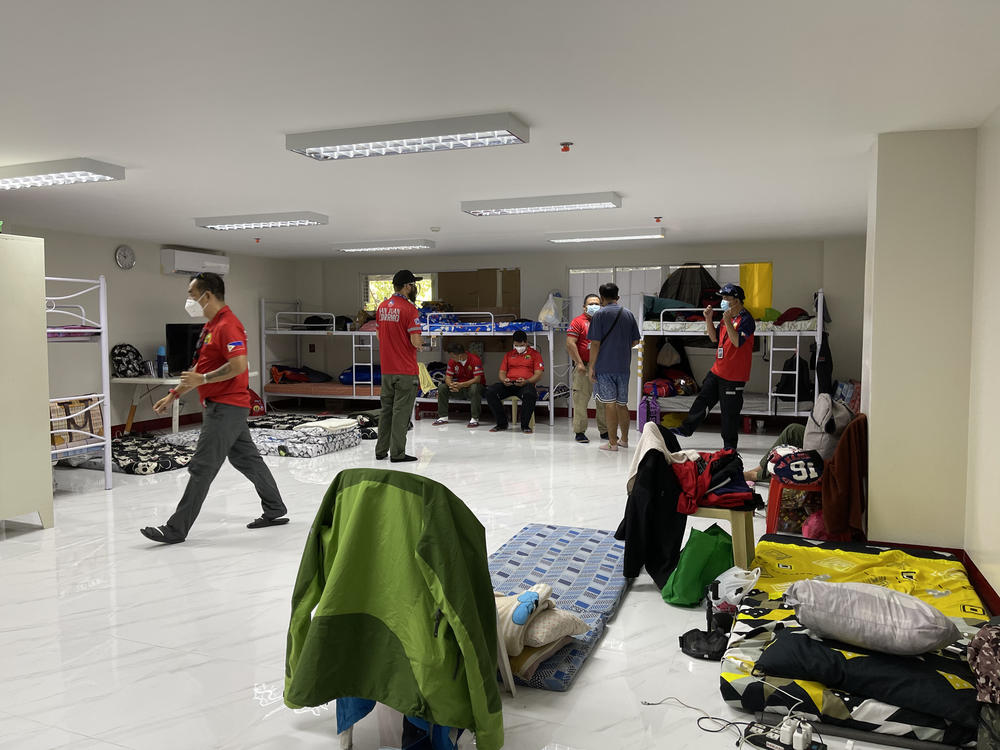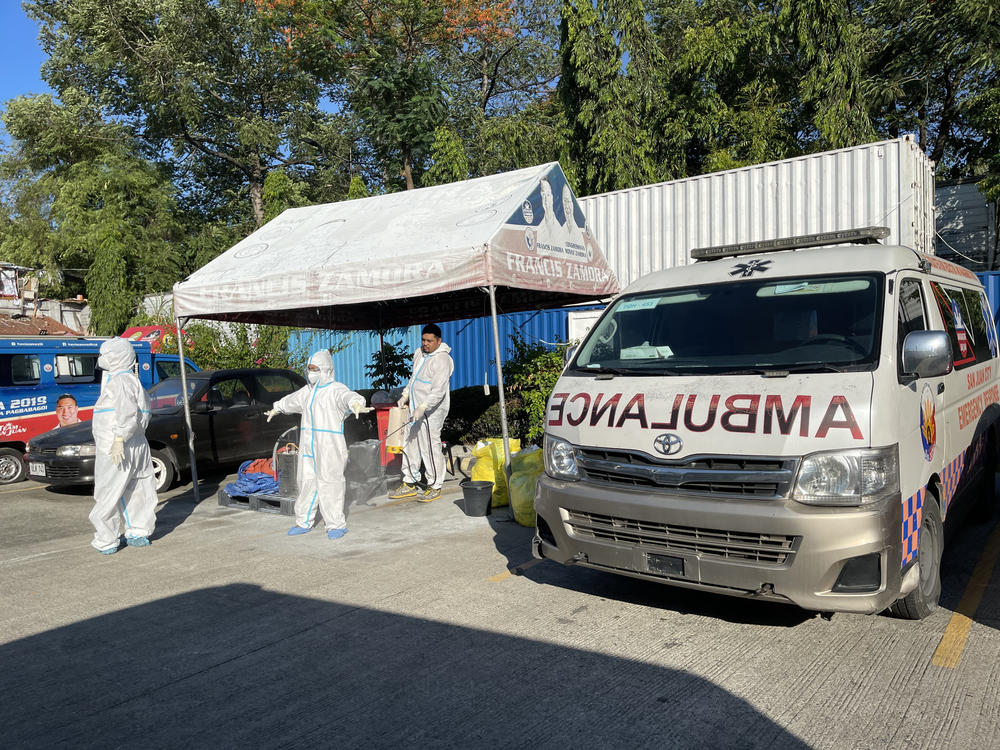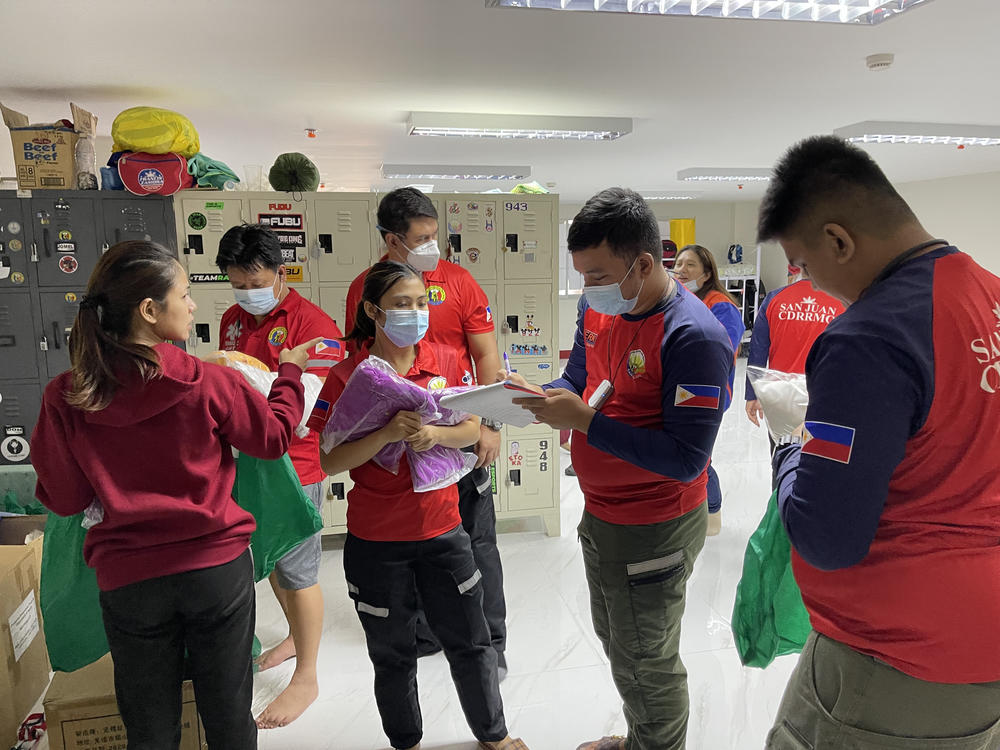Section Branding
Header Content
The Homesick EMTs Of Manila Say A Patient's Smile Makes It All Worthwhile
Primary Content
Clarisa Andres, a petite 22-year-old, hasn't been home in over a month. She's homesick, but she says she can cope.
She's an emergency medical technician with the San Juan Early Response Network – one of the few women on the 63-member team – and the pandemic has amped up their work of responding to medical emergencies. They work 24-hour shifts, 7 days a week and when they're on call, they live in a dorm with other health-care workers.
Only now, some of them rarely go home when they're off. Even though they're all vaccinated, they're concerned they could still contract the disease and infect family.
"Of course we get tired, we get exhausted sometimes," she tells NPR. "But when you see their smile, when the patient thanks you, you feel fulfilled."
A couple of weekends ago, I spent 12 hours with the unit in San Juan City, located in the heart of Metro Manila, Philippines.
The team takes on all the medical tasks they did before the pandemic, from cleaning and bandaging cuts to giving food and juice to people with hypoglycemia. But now there's COVID-related work as well. And a new urgency to avoid bringing folks to the hospital.
"Anything that we could resolve in the household, we do it," says Pacasum. The reason: A June study from the Philippines Department of Health showed that even though cases were slowing in Manila, many hospitals there were still either at or near capacity.
It's 8 a.m. on Saturday when I arrive at a newly constructed building next to the city hall of San Juan.
Inside a large room are four sets of bunk beds and several mattresses laid out on the floor. This is where the frontliners eat, sleep and hang out between responding to medical emergencies called in from across the city. Much like the way 911 works in the U.S., these calls are fielded by dispatchers at the San Juan disaster operation center and then passed on to either the police, firefighters or the emergency medical team.
Serepada "Tong" Pacasum, head of the city's disaster management office who oversees the crew, explains how the team works. "A majority of our teammates here are EMTs. We also have a registered nurse," he says. There are also drivers, administrative assistants and other staffers.
He says the health care workers can go on seven to 15 medical emergency runs a day – about double their daily schedule pre-pandemic. And while this work has never been easy, fear of catching the coronavirus heightens the stakes every time they step out to help someone.
Since the pandemic started, over half of the staff have tested positive for COVID.
EMT Kristoff Feiling says he hasn't seen his wife and children in two months. But the 47-year-old says he isn't put out by it.
"If you like your work, if you like to help other people, if it's in your heart, there's no reason for [it to be] difficult," Feiling says.
I soon get to see this dedication in action. A call comes in around 3 p.m. for one of the team's pandemic responsibilities: transferring COVID-positive patients. In the Philippines, citizens who test positive are supposed to wait for an ambulance to take them to a hospital or quarantine facilities.
"Let's go!" says a team member as he climbs into the front seat of the support vehicle that will follow the ambulance. About eight people go on each run, including EMTs and drivers.
Before leaving, the team dons PPE gowns, masks, face shields and gloves.
The EMTs collect the patient — a woman with COVID in her 30s who is 37 weeks pregnant – and bring her to the ambulance. Siren wailing, they race her to the hospital about 6 miles away.
When the team pulls up to the emergency entrance, a stark reminder of just how overwhelmed the health system greets them. A line of some 50 people snakes down the sidewalk outside the hospital.
EMT Florena Israel Mondejar explains they are "all patients waiting for their admission."
Suddenly, Mondejar jerks in the opposite direction and points a finger to the ambulance bay. Team members watch quietly as a body bag is carried into a vehicle.
Once the pregnant patient enters the hospital, that silence lingers until the team is back at the barracks.
At 6:30 p.m., another call comes in, this time to San Juan's only mass vaccination site, located in a basketball arena. Four EMTs rush to check a man who appears to be having some difficulties after receiving his vaccine.
The team jumps out of the ambulance and races through the arena to find the patient — a middle aged, heavy-set man seated in the stands who is looking despondent.
EMT Feiling says the patient has elevated blood pressure. But when the team starts asking questions, the man seems to start to shake out of his daze. They determine he is OK and drive the patient home. That's one fewer potential patient for the overcrowded hospitals of Manila.
Copyright 2021 NPR. To see more, visit https://www.npr.org.



